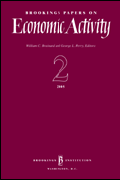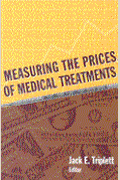Studies in this week’s Hutchins Roundup find high asset prices help stabilize output and speed up economic recovery, poverty rates decreased in response to the COVID-19 stimulus policies, and more.
Want to receive the Hutchins Roundup as an email? Sign up here to get it in your inbox every Thursday.
High asset prices help stabilize output
The stock market’s quick recovery from its mid-March crash has substantially outpaced the recovery in the real economy, leading some observers to conclude that financial markets are overly exuberant and others to conclude that monetary policy has helped Wall Street but not Main Street. Ricardo J. Caballero and Alp Simsek of MIT find that the rapid rise in asset prices actually may be the result of optimal monetary policy. Because asset prices influence aggregate demand with a lag, monetary policy that induces asset price overshooting will help output to return to expected levels as quickly as possible. While this creates a temporary gap between the financial market and real economy, the gap dissipates after the economy returns to normal levels. However, the COVID recession has been unique in some ways, the authors note. Specifically, firms that didn’t see a decline in output as a result of the pandemic but benefited from the central bank’s asset-boosting policies had extraordinary stock performance, leading to some index funds’ historically high performance. The authors conclude that regardless of the extent to which the current gap between the financial market and the real economy is the result of central banking policies or “pockets of irrational exuberance,” high asset prices will still have a positive effect on the post-COVID economic recovery.
Covid-19 stimulus policies decreased poverty rates
Federal government stimulus in response to the Covid-19 pandemic decreased poverty rates and increased annual income for low-income households across demographic groups and states, find Jeehoon Han of Zhejiang University and co-authors. Using recent family income data from the Current Population Survey, the authors estimate that the poverty rate fell from 10.9% in January and February to 9.4% in April, May and June, despite a 14% decline in the employment rate in April. Policies including Economic Impact Payments, small business loans, and unemployment insurance expansions account for the entirety of the decline in the poverty rate, which would otherwise have risen by over 2.5 percentage points. The authors also show that by June, the majority of those eligible for unemployment benefits had received them. The rates at which eligible applicants actually received benefits varied across states, however, resulting in important distributional consequences. States with lower recipiency rates have larger Black population shares, making eligible Black applicants for unemployment benefits less likely to have received them.
Puerto Rican migrants boosted the Orlando economy following Hurricanes Irma and Maria
Following Hurricanes Irma and Maria, approximately 24,000 Puerto Ricans migrated to Orlando. Giovanni Peri, Derek Rury, and Justin C. Wilshire of the University of California, Davis find that these migrants were fully absorbed into the economy, increasing overall employment by 0.4%, without displacing native workers and with almost no effect on earnings. Using data from the Quarterly Census of Employment and Wages and the Quarterly Workforce Indicators, they compare county-level outcomes in the Orlando commuting zone to a weighted average of nine other U.S. metropolitan regions between September 2017 and September 2018. The construction sector, where Puerto Ricans are significantly overrepresented, saw a 4% increase in employment and 3.3% higher wages. Employment in the retail and hospitality sectors, which felt the strongest consumer demand shocks, increased by 0.9% and 1.2%, respectively. The authors conclude that the migrants created positive shocks in both labor supply and consumer demand which in aggregate positively affected the Orlando economy.
Chart of the week: GDP projections by country
Quote of the week:
“Our new statement explicitly acknowledges the challenges posed by the proximity of interest rates to the effective lower bound. By reducing our scope to support the economy by cutting interest rates, the lower bound increases downward risks to employment and inflation. To counter these risks, we are prepared to use our full range of tools to support the economy. With regard to the employment side of our mandate, our revised statement emphasizes that maximum employment is a broad-based and inclusive goal. This change reflects our appreciation for the benefits of a strong labor market, particularly for many in low- and moderate-income communities. In addition, our revised statement says that our policy decision will be informed by our ‘assessments of the shortfalls of employment from its maximum level’ rather than by ‘deviations from its maximum level’ as in our previous statement. This change may appear subtle, but it reflects our view that a robust job market can be sustained without causing an outbreak of inflation,” says Jerome Powell, Chair of the Federal Reserve.
“We have also made important changes with regard to the price-stability side of our mandate. Our longer-run goal continues to be an inflation rate of 2%. Our statement emphasizes that our actions to achieve both sides of our dual mandate will be most effective if longer-term inflation expectations remain well anchored at 2%. However, if inflation runs below 2% following economic downturns but never moves above 2% even when the economy is strong, then, over time, inflation will average less than 2%. Households and businesses will come to expect this result, meaning that inflation expectations would tend to move below our inflation goal and pull realized inflation down. To prevent this outcome and the adverse dynamics that could ensue, our new statement indicates that we will seek to achieve inflation that averages 2% over time. Therefore, following periods when inflation has been running below 2%, appropriate monetary policy will likely aim to achieve inflation moderately above 2% for some time.”











Commentary
Hutchins Roundup: Asset prices, poverty rates, and more
August 27, 2020